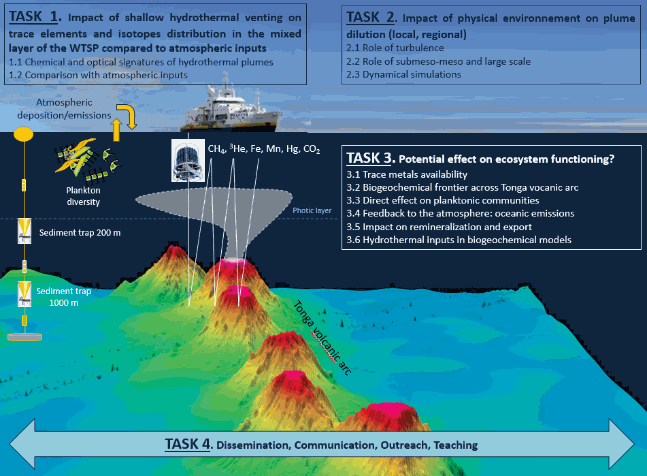Guieu Cécile, Bonnet Sophie, Abadou Fatima, Alliouane Samir, Arnaud-Haond Sophie, Arnone Veronica, Baudoux Anne-Claire, Baumas Chloe, Beillard Lucie, Benavides Mar, Berman-Frank Ilana, Bhairy Nagib, Bigeard Estelle, Boulart Cedric, Bouruet-Aubertot Pascale, Boyd Philip, Bressac Matthieu, Camps Mercedes, Chaffron Samuel, Chavagnac Valérie, Chevaillier Servanne, Collot Julien, Cuypers Yannis, de Liège Guillaume, de Saint léger Emmanuel, de Vargas Colomban, Desboeufs Karine, Desgranges Marie-Maelle, Destrigneville Christine, Dimier Céline, Diruit Wendy, Dissard Delphine, Doussin Jean-François, Dufour Aurélie, Dulaquais Gabriel, Fernandez Jean-Michel, Feron Anaïs, Ferrieux Mathilde, Filella Alba, Forrer Heather, Fourrier Pierre, Gac Jean-Philippe, Gachenot Martin, Gaimoz Cécile, Garczarek Laurence, Gazeau Frédéric, Gonzalez Aridane, Gonzalez Santana David, Gorgues Thomas, Grima Nicolas, Grisoni Jean-Michel, Grosso Olivier, Guigue Catherine, Habasque Jeremie, Heimbürger-Boavida Lars-Eric, Jeandel Catherine, Jeanthon Christian, Journet Emilie, Knapp Angela, Lacan François, Le Gall Florence, Le Moal Pierre, Le Moigne Frédéric, Leblanc Karine, Leblond Nathalie, Lebourges-Dhaussy Anne, Leconte Jade, Lefèvre Dominique, Lombard Fabien, Lorrain Anne, Lory Caroline, Maes Christophe, Mahieu Léo, Marie Dominique, Mazoyer Camille, Menkes Christophe, Michoud Vincent, Montanes Maryline, Not Fabrice, Nunige Sandra, Paparella Francesco, Patriat Martin, Pelletier Bernard, Petrenko Anne, Planquette Helene, Point David, Portlock Gemma, Probert Ian, Pulido-Villena Elvira, Ratin Morgane, Ratnarajah Lavenia, Riso Ricardo, Rizzo Andrea, Salaun Pascal, Sarthou Geraldine, Schmechtig Catherine, Sellegri Karine, Simon Nathalie, Tagliabue Alessandro, Taillandier Vincent, Tamburini Christian, Tedetti Marc, Thibon Fanny, Tilliette Chloé, Torres Rodriguez Natalia, Triquet Sylvain, Uitz Julia, Van Wambeke France, Vaulot Daniel, Vigier Nathalie, Vilain Marion, Vorrath Maria Helena, Weppe Lucas, Whitby Hannah (2023). BIOGEOCHEMICAL dataset collected during the TONGA cruise. SEANOE. https://doi.org/10.17882/88169
Copy this text


